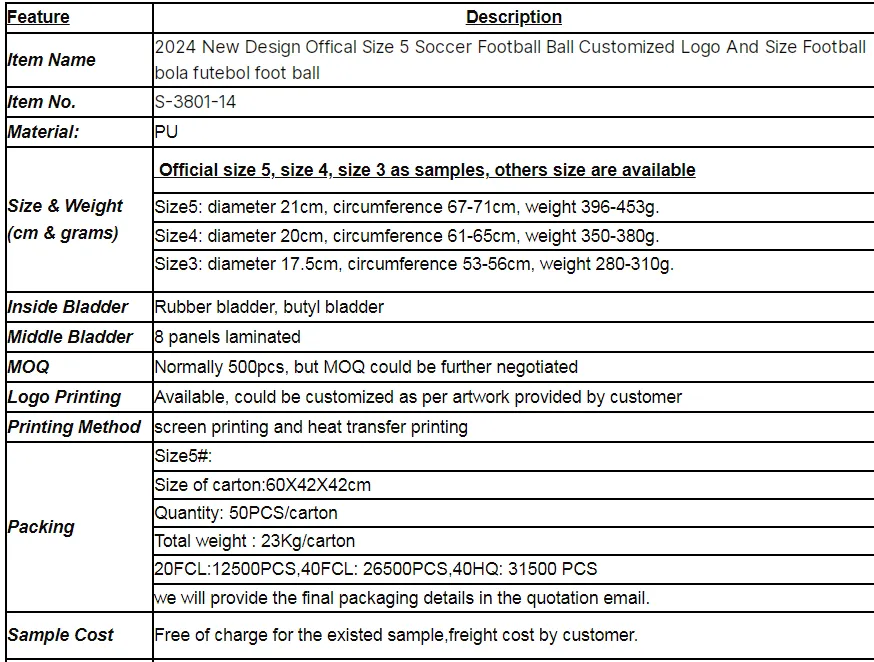When it comes to choosing the perfect soccer ball, players and enthusiasts alike seek a combination of durability, performance, and reliability. The soccer ball, often considered the heart of the game, has evolved significantly over the years, showcasing the intricate balance between innovative technology and traditional craftsmanship.

Soccer balls are crafted with multiple layers, starting with the innermost bladder, usually made from latex or butyl.
This component is responsible for the ball’s air retention. Butyl bladders are known for their superior air retention, allowing the ball to maintain pressure longer compared to latex which offers a softer feel and greater bounce. This technical detail is crucial for players who prioritize consistent performance over time.
The outer casing of a soccer ball is typically made from synthetic leather, composed of polyurethane (PU) or polyvinyl chloride (PVC). PU is favored for its softness and responsiveness, which are key factors for professional matches. In contrast, PVC offers higher durability, making it ideal for training sessions and recreational play. This highlights the necessity of understanding material properties to select a ball that matches specific playing conditions.

Panels are another critical aspect, affecting ball control and aerodynamics. Most soccer balls are crafted with 32 panels, although modern designs may vary. Panels are stitched or thermally bonded, impacting the ball's performance in terms of water resistance and weight consistency. Thermally bonded balls, for instance, are less likely to absorb water, making them suitable for wet conditions, whereas hand-stitched balls offer enhanced durability due to their tight seams.
Apart from its structural elements, the design and branding of a soccer ball hold substantial appeal. Major tournaments, like the FIFA World Cup, often introduce limited edition designs with distinctive color patterns and logos. These not only serve aesthetic purposes but can also influence a player's perception and interaction with the ball. A well-designed soccer ball exudes professionalism and prestige, which can enhance the credibility of a brand or a sporting event.
soccer ball
Understanding the soccer ball's ecological impact is also crucial in today's environmentally conscious world. Manufacturers are now focusing on sustainable production methods, using recycled materials and water-based inks, thus reducing the ball's carbon footprint. Environmentally friendly soccer balls appeal to eco-aware consumers and contribute positively to a brand's reputation, establishing trust and authority within the market.
Insight from professional athletes offers invaluable perspectives that profoundly influence the perception of quality and performance. The endorsement of a soccer ball by a revered player can significantly amplify its desirability and perceived value. This underscores the importance of authentic and tangible experience in establishing a product's market authority.
When choosing the right soccer ball, players should consider not only their playing style and personal preferences but also insights drawn from evaluations by experts in sports science and technology. These evaluations often emphasize the importance of testing under controlled conditions to achieve the desired balance between weight, pressure, and sphericity. Such rigorous testing procedures affirm the manufacturer's commitment to precision and quality, fostering trust among consumers.
In conclusion, the soccer ball is more than a simple piece of sporting equipment; it embodies a complex interplay of material science, design innovation, and ecological responsibility. By understanding the intricate details of its construction and the expertise behind its development, players and consumers can make informed decisions, ensuring they select a product that meets their specific needs and expectations. This informed selection process not only enhances the playing experience but also contributes to the sustainable growth of soccer as a global sport, underpinning the sport’s ongoing cultural and social significance.













